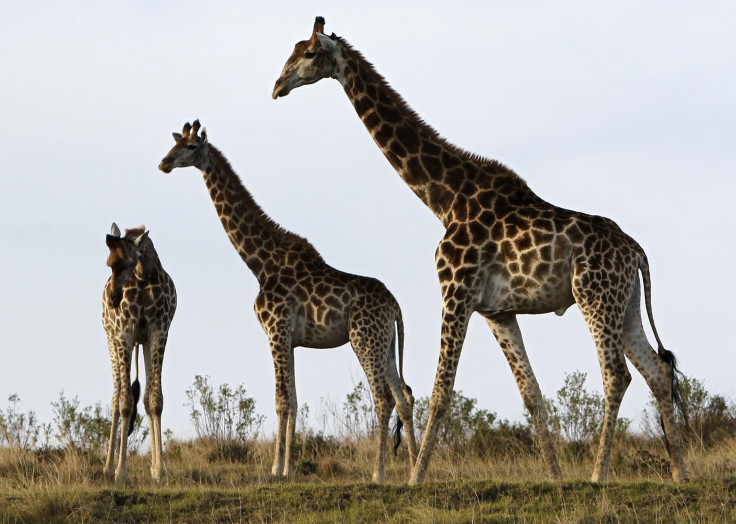Giraffe Genetic Study Uncovers 4 Distinct Species Of World’s Tallest Mammal

Scientists had so far recognized only one giraffe species and up to 11 subspecies while the distinctness of each subspecies of the animal still remains unclear even after a century of research. But, according to what is claimed to be the most inclusive genetic analysis of the world’s tallest mammal, there are actually four species of the animal, not just one.
As part of a new study, published in the journal Current Biology on Thursday, researchers examined the DNA evidence taken from skin biopsies of 190 giraffes collected from all across Africa. According to them, the genetic differences among giraffe species are as great as those between polar and brown bears.
“Our findings provide the most inclusive analysis of giraffe relationships to date and show that their genetic complexity has been underestimated, highlighting the need for greater conservation efforts for the world’s tallest mammal,” the researchers said in the study.
The genetic investigation of giraffe began when Julian Fennessy of Giraffe Conservation Foundation in Namibia approached Axel Janke, a geneticist at the Senckenberg Biodiversity and Climate Research Centre and Goethe University in Germany, about five years ago to ask for help with genetic testing of the animal. The goal was to figure out how similar the giraffes living in different parts of Africa were to each other, and to make greater conservation efforts for them.
After looking at the genetic samples provided by Fennessy, Janke spotted significant differences between groups of giraffes that needed to be considered when devising conservation strategies. Further testing also revealed that they were in fact different giraffe species, and therefore they couldn't all breed with one another.
The researchers said, based on genetic analysis, that there are four highly distinct groups of giraffe that apparently do not mate with each other. Therefore, they should be recognized as four distinct species, including southern giraffe (Giraffa giraffa), Masai giraffe (G. tippelskirchi), reticulated giraffe (G. reticulata) and northern giraffe (G. camelopardalis), which includes the Nubian giraffe (G. c. camelopardalis).
“With now four distinct species, the conservation status of each of these can be better defined and in turn added to the IUCN Red List,” Fennessy said in a statement, referring to the International Union for Conservation of Nature and Natural Resources, which recently submitted a proposed assessment of the giraffe on the IUCN Red List, taking into consideration the animal’s rapid decline over the last 30 years.
Over the last three decades, giraffes are in dramatic decline across their range in Africa with their numbers dropping from more than 150,000 to fewer than 100,000.
“Now we know we have four distinct species, that makes it easier for conservation groups to convince African governments and other larger conservation groups to make a point that these giraffes need to be protected,” Janke, who conducted the new research, told The Christian Science Monitor.
© Copyright IBTimes 2024. All rights reserved.






















